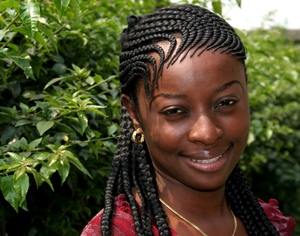Science fairs for any age student are about teaching the scientific method to kids: what a hypothesis is, how to think about an idea logically and critically, and how to test it rigorously and record results. A junior high school science fair is a perfect opportunity for younger students to demonstrate independence of thought and creativity, and to have fun while doing it; it’s never about the success or failure of the hypothesis itself. Whether your junior high student likes plants, motion or animals, there is a science fair project idea for everyone.
Biology
One easy experiment for students to try is to determine what kind of preservatives found around the home can prevent a fruit from rotting. Since no one likes rotten fruit, produce we purchase from the grocery store often contains chemicals or preservatives to keep fruit in good shape for periods of time. For the project, a student must purchase three pieces of the same type of fruit, and slice it in half. Next, the individual should use three different substances on the fruit to see which one keeps the produce looking as fresh as possible. Ideas to use for fruit preservation include fresh lemon juice, sugar, vinegar or salt. Test the subject for a week, and record the rate of browning as it occurs.
Physics
One topic in physics is the idea of convection and conduction of heat or cool air. A science fair idea to determine how long it would take to cool off a soda can would be to try three different methods in cooling it down. Use three cans of room temperature soda, and place them in three different locations such as the freezer, refrigerator and a bowl with ice and water. Keep each soda can in its designated location for 30 minutes, and pour into three individual plastic cups with a thermometer. Measure the temperature of the three cans of soda to see which one cooled down fastest. This experiment would remove heat from the soda can with convection, evaporation and conduction.
Chemistry
Creating crystals is a common chemistry experiment, but exciting for students. To create a unique take on a crystal experiment, the student may test whether making crystals in three different water temperatures has any impact on creation of them. The three different water temperatures are ice water bath, room temperature water and refrigerated water. To begin the experiment, record the starting temperatures of the three water samples, and tie three equal pieces of string to a pencil and place over a plastic cup. Fill each of the plastic cups with ¾ cup of boiling water, one tablespoon of borax powder and stir to dissolve. Cover the cups and solution with wax paper and let sit for five hours or until the student begins to see crystals forming. If the experiment runs longer, be sure to keep adding ice to the ice bath to keep results accurate. Record changes in the composition book.

